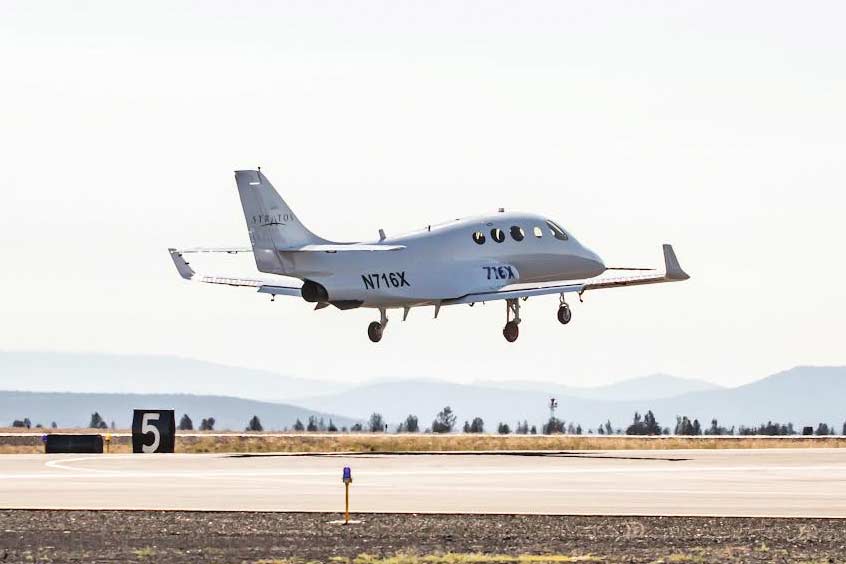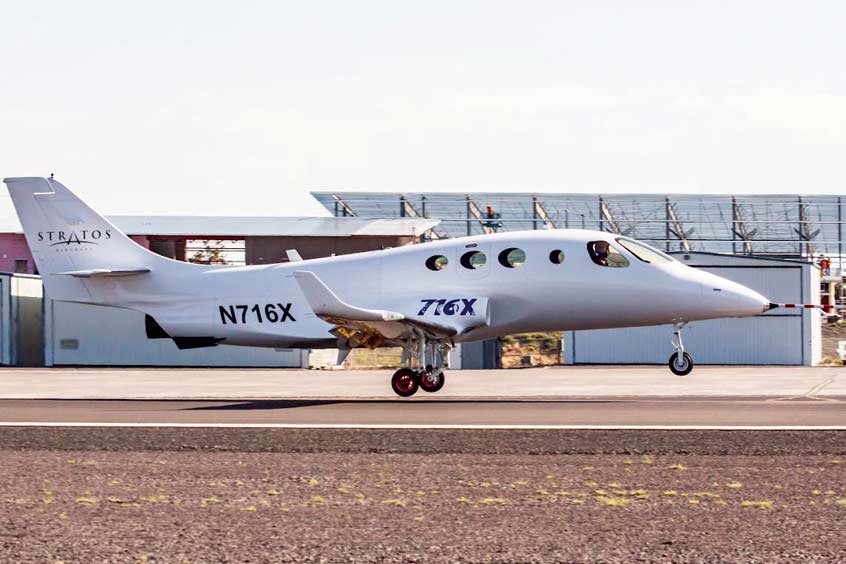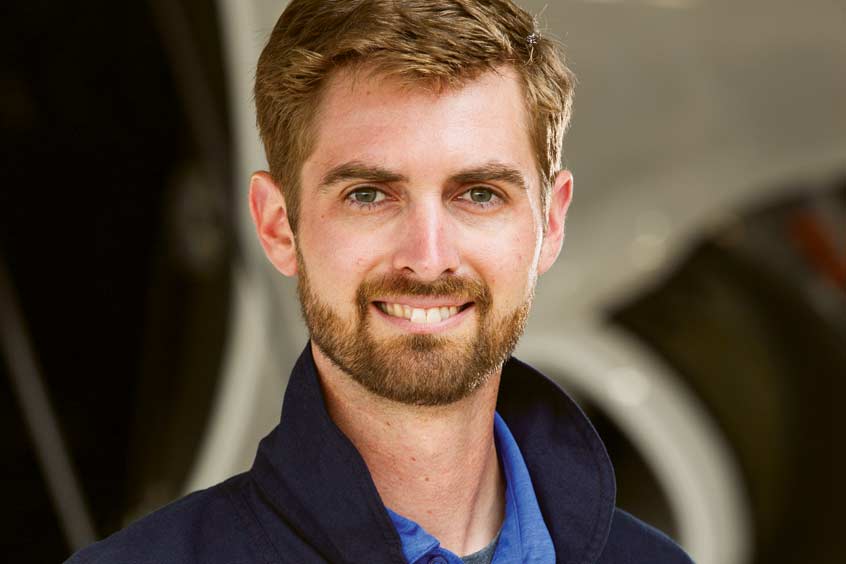Why visit ACE ’25?




Stratos Aircraft has completed the first flight of its Stratos 716X model, registration N716X. The flight lasted 22 minutes. Flown by test pilot Sean VanHatten, the Stratos 716X is a six-seat jet with generous space for baggage. The all-carbon airframe, single-engine jet is designed to cruise at 400 kts. The first flight was a full power takeoff and climb to 13,500 ft, and a series of manoeuvres were then conducted to evaluate handling characteristics. The flight is the first of an extensive flight test programme that will span the next several months.
The 716X is 4.5 ft longer, and has a wider cabin, than the 714 proof of concept (PoC) aircraft introduced at Oshkosh in 2017. The all-carbon-fibre 716X features trailing link gear, is powered by a Pratt & Whitney JT15D-5 turbofan and is configured with dual G3X screens, GTN 750 MFD, integrated Garmin Autopilot, dual standby attitude indicators, custom switch panels, fully automated pressurisation system and air conditioning. The Stratos 716X is a multi-role VLJ designed to comfortably seat six people to support personal, business and air taxi use.
“The first flight of the 716X went as briefed, which is a testament to the design quality and the professionalism of the crew here at Stratos,” says VanHatten. “The aircraft is well harmonised, and its directional stability was very good. The Stratos Aircraft team should be very proud of this accomplishment, and I'm looking forward to continued flight testing of this new design.”
“When we introduced the proof of concept 714 aircraft three years ago, the marketplace interest was tremendous,” adds company CTO, Carsten Sundin. “It was clear that the market is looking for the performance and comfort we were offering, but in a true six-place aircraft. We have achieved this with the 716X. With a cabin width of 4.9 ft and height of 4.8 ft, there is plenty of room for passengers to relax on long flights.”
The 716X will be offered as an experimental kit build aircraft while the 716 will be certified by the FAA for production. “We see producing a limited number of kit aircraft as a logical step towards certification. It will allow customers who don't want to wait for the 716 certification an opportunity to own and operate a Stratos 716X much sooner, while we continue to develop our production processes,” adds Sundin.
Test pilot VanHatten has over 5,300 hours, with over 120 hours in the Stratos proof of concept 714. Sean has performed nineteen first flights and flown four prototype aircraft.
The Stratos 716X kit will be comprehensive and include a builder's assist programme. “We are excited to be able to introduce the 716X builder's assist programme,” Sundin says. “This programme will allow us to deliver the 716X to a select group of customers very soon while we continue with the programme for the 716 certified aircraft.”
Stratos Aircraft has invested significantly to support the production of the Stratos 716 and 716X. Its facilities total over 41,000 sq ft in Redmond, Oregon. Stratos boasts a full engineering team, design office, assembly facility and a manufacturing machine shop complete with a gantry router, large volume 3D printer, waterjet cutter and CNC machines. A separate facility at Roberts Field Airport, Redmond supports the flight test programme.
“We have also just commissioned our state-of-the-art composite manufacturing facility. Advanced technology is applied in the construction of the carbon‑fibre parts, including a CNC ply cutter and laser projectors to aid the alignment of the individual plies. The dedicated building also has a large 'walk‑in' oven in which the completed parts are cured,” Sundin explains.
VanHatten was extremely satisfied with the results of the first flight. “The aircraft performed just as predicted, and the initial feedback is that the handling qualities are excellent. We look forward to now expanding the flight envelope and demonstrating the aircraft's full potential.”